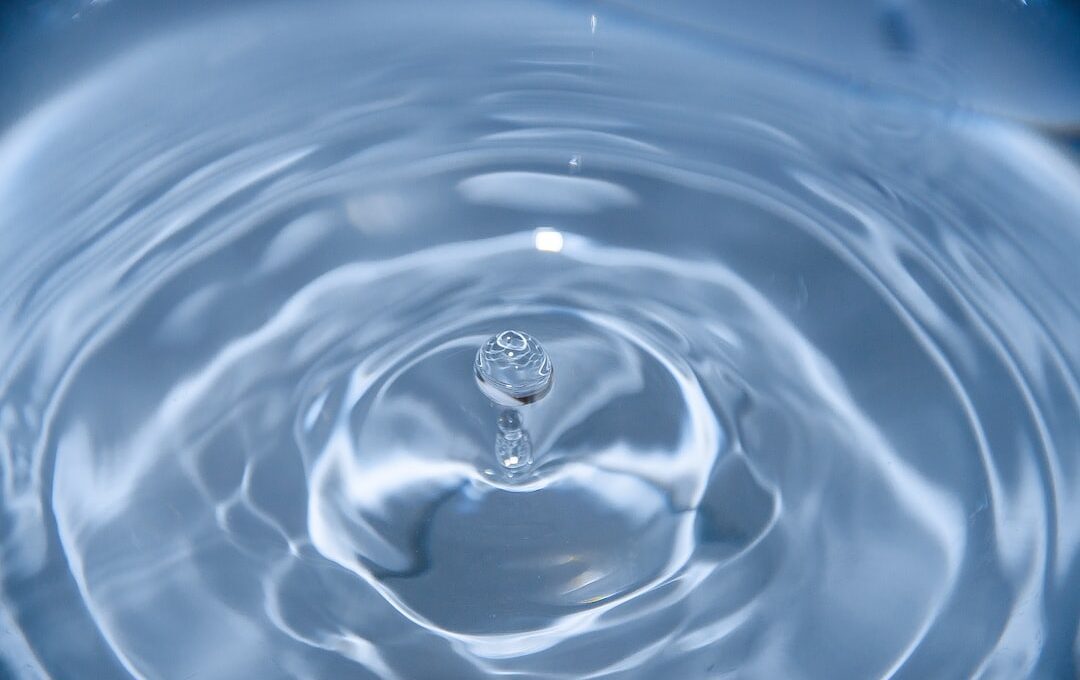Are you wondering how often you should water your monkey grass?
Proper watering is essential for the health and vitality of your monkey grass, as it helps to maintain its lush green appearance and prevent common issues like drought stress and fungal diseases. By understanding the watering needs of monkey grass and following a watering schedule, you can ensure that your plants thrive.
This article will guide you through the process of establishing a watering schedule, provide tips on watering techniques, and offer advice on monitoring soil moisture. Additionally, you will learn about watering newly planted monkey grass and watering it in containers. Troubleshooting common watering issues will also be covered to help you maintain the optimal hydration for your monkey grass.
So let’s dive in and discover the best practices for watering your monkey grass to keep it healthy and beautiful!
Quick Summary
- Water monkey grass once or twice a week
- Aim for 1 inch of water per week
- Check soil moisture regularly using a moisture meter
- Avoid overwatering to prevent yellowing leaves, wilting, and root rot
Understanding Monkey Grass Watering Needs
So, how often should you water monkey grass to keep it happy and thriving?
Watering frequency is an essential factor in maintaining the health of your monkey grass. Monkey grass generally requires watering once or twice a week, depending on the climate and soil conditions. However, it’s important not to overwater, as this can lead to root rot and other issues.
To determine if your monkey grass needs watering, it’s crucial to observe the signs of overwatering. These signs include yellowing leaves, wilting, and a foul odor coming from the soil. If you notice any of these signs, it’s a clear indication that you’re overwatering your monkey grass.
In such cases, it’s best to reduce the frequency of watering and allow the soil to dry out between waterings. Remember, it’s better to underwater monkey grass than to overwater it. By understanding the watering needs of your monkey grass and being attentive to signs of overwatering, you can ensure a healthy and thriving lawn.
Establishing a Watering Schedule
To maintain the vibrancy of your monkey grass, it’s crucial to establish a regular watering schedule. Setting a watering timer can help you stay consistent and ensure that your grass gets the right amount of water. Monkey grass generally requires about 1 inch of water per week, but this may vary depending on the climate and soil conditions. It’s important to check the soil moisture levels regularly to determine if your grass needs watering.
To help you establish a watering schedule, use the table below as a guide:
| Day of the Week | Watering Frequency |
|---|---|
| Monday | Water |
| Tuesday | No Water |
| Wednesday | Water |
| Thursday | No Water |
| Friday | Water |
By following this schedule, you can ensure that your monkey grass receives adequate hydration without overwatering it. Overwatering can lead to root rot and other issues that can harm the health of your grass. Remember to adjust the watering schedule based on rainfall and weather conditions. Regularly checking soil moisture levels is also essential, as it can help you determine if your grass is receiving enough water or if adjustments need to be made. By setting a watering timer and monitoring soil moisture levels, you can keep your monkey grass healthy and vibrant.
Watering Techniques for Monkey Grass
A key to maintaining the vibrancy of your monkey grass is employing effective watering techniques. Proper drainage for monkey grass watering is essential to prevent overwatering and root rot. When watering, make sure the water is able to drain away from the grass roots.
Avoid watering too frequently, as this can lead to shallow root growth and susceptibility to drought. Instead, water deeply and infrequently to encourage deep root establishment.
Another technique to consider is using mulch to retain moisture in monkey grass beds. Mulch acts as a protective layer, helping to prevent evaporation and retain soil moisture. Apply a layer of mulch around the monkey grass, ensuring that it isn’t directly touching the stems. This will help to keep the soil moist and reduce the need for frequent watering.
Remember to water your monkey grass in the early morning or late afternoon, when temperatures are cooler. This will allow the water to soak into the soil before it evaporates. Avoid watering during the hottest part of the day, as this can lead to water loss through evaporation.
By following these watering techniques, you can ensure that your monkey grass stays healthy and vibrant. Proper drainage and the use of mulch will help to retain moisture and prevent overwatering, allowing your monkey grass to thrive.
Best Time of Day to Water Monkey Grass
When it comes to watering your monkey grass, it’s important to know the best time of day to do it. One of the benefits of watering in the morning is that it gives the grass ample time to dry before evening, which can help prevent disease.
On the other hand, you should avoid watering in the evening as the grass will stay wet overnight, creating a breeding ground for fungus and other issues.
Morning Watering Benefits
Watering monkey grass in the morning allows the sunlight to gently penetrate the blades, nourishing them with a soft golden glow. This not only provides a beautiful start to your day but also offers several benefits for your monkey grass. Here are three reasons why morning watering is beneficial for your monkey grass:
-
Reduced Risk of Disease: Watering in the morning allows the grass to dry out during the day, minimizing the chance of fungal diseases caused by moisture lingering on the blades.
-
Increased Water Absorption: Monkey grass is able to absorb water more efficiently in the morning when temperatures are cooler. This ensures that your grass receives the hydration it needs to thrive.
-
Enhanced Growth: Morning watering promotes healthy growth by providing ample moisture and nutrients early in the day. This allows the grass to utilize the energy from the sunlight and grow vigorously.
By watering your monkey grass in the morning, you can enjoy a lush and vibrant lawn while keeping it safe from potential diseases.
Avoiding Evening Watering
By refraining from watering in the evening, you can protect your monkey grass from potential harm and maintain its health and vibrancy. Watering frequency plays a crucial role in the overall well-being of your plants. Evening watering may seem convenient, but it can have negative effects on your monkey grass. When you water in the evening, the moisture tends to sit on the foliage for an extended period, creating a moist environment that promotes the growth of fungal diseases. To avoid this, it is recommended to water your monkey grass in the morning. This allows the foliage to dry out during the day, preventing the development of diseases. Here is a simple table to help you understand the effects of evening watering:
| Watering Time | Effects on Monkey Grass |
|---|---|
| Evening | Promotes fungal diseases |
| Morning | Promotes healthy growth |
Remember, taking precautions like watering in the morning can safeguard your monkey grass and ensure its longevity.
Monitoring Soil Moisture
To ensure optimal growth, it’s important to regularly check the moisture levels in the soil for your monkey grass. By measuring the moisture levels, you can determine if your plants are getting enough water or if they’re being overwatered.
Overwatering can be detrimental to the health of your monkey grass, so it’s crucial to keep an eye on the soil moisture.
One way to monitor soil moisture is by using a moisture meter. These handy devices can give you an accurate reading of the moisture content in the soil, allowing you to adjust your watering schedule accordingly. Aim for a moisture level of around 6 to 8 inches deep in the soil. If the meter indicates that the soil is too wet, hold off on watering for a few days to allow it to dry out.
Another sign of overwatering is the appearance of yellowing leaves or root rot. If you notice these signs, it’s important to adjust your watering routine. Remember, the goal is to keep the soil consistently moist but not waterlogged.
By regularly monitoring the soil moisture and adjusting your watering schedule accordingly, you can ensure the optimal growth and health of your monkey grass. So keep an eye out for signs of overwatering and use a moisture meter to measure the moisture levels in the soil. Your monkey grass will thank you for it!
Is the Watering Schedule for Monkey Grass Similar to Sempervivum?
When it comes to watering, the schedule for monkey grass differs from sempervivum plants. While monkey grass requires moderate watering, sempervivum plants thrive with little water. It’s crucial to avoid overwatering your sempervivum plant frequently, as it prefers well-drained soil and can easily rot if soaked. Understanding the specific needs of each plant will help you maintain a healthy and lush garden.
Watering Newly Planted Monkey Grass
Make sure your newly planted monkey grass gets off to a strong start with the right watering technique. Establishing a proper watering routine is crucial for the health and growth of your monkey grass. Here are some important tips to keep in mind:
-
Watering frequency: During the first few weeks after planting, water your monkey grass deeply but infrequently. Aim to water it every 2-3 days, providing enough moisture to saturate the soil to a depth of at least 6 inches. This will encourage the roots to grow deep and establish a strong foundation.
-
Proper drainage: Monkey grass thrives in well-drained soil, so it’s crucial to ensure that excess water can easily drain away. Avoid overwatering, as this can lead to root rot and other issues. If you notice standing water around your monkey grass, consider improving the drainage by adding organic matter or creating a slope.
By following these guidelines, you can help your newly planted monkey grass thrive. Remember, establishing a proper watering routine and ensuring proper drainage are key to the success of your monkey grass. So, water deeply but infrequently, and pay attention to the drainage to promote a healthy and safe growth environment for your monkey grass.
Watering Monkey Grass in Containers
Watering monkey grass in containers is like quenching the thirst of a vibrant green oasis. When it comes to container care, proper drainage is key to keeping your monkey grass happy and healthy. Containers should have drainage holes to prevent water from pooling and causing root rot. It’s essential to choose a well-draining soil mix specifically formulated for container gardening. This will help prevent waterlogged roots and promote healthy growth.
In terms of watering frequency, monkey grass in containers should be watered regularly, especially during the hot summer months. However, it’s important to strike a balance and not overwater. Overwatering can lead to root rot and other diseases. To determine when to water, check the soil moisture level by sticking your finger about an inch into the soil. If it feels dry, it’s time to water. Avoid watering on a set schedule and instead, base it on the needs of your monkey grass.
Remember, the goal is to provide enough moisture to keep the soil evenly moist but not soggy. It’s better to underwater slightly than to overwater. By following these watering guidelines and ensuring proper drainage, your monkey grass in containers will thrive and add a touch of lushness to your outdoor space.
Troubleshooting Common Watering Issues
Addressing common watering issues can help ensure the health and vitality of your monkey grass in containers. When it comes to watering frequency, it’s important to find the right balance.
Monkey grass prefers moist soil, but overwatering can lead to problems. One sign of overwatering is yellowing or wilting leaves. If you notice this, it’s a good indication that you should cut back on the watering.
Another common issue is underwatering. If the soil feels dry to the touch, it’s time to give your monkey grass a drink. When watering, make sure to water deeply, allowing the water to penetrate the soil and reach the roots. This will encourage strong root growth and overall plant health.
It’s also important to remember that different environmental factors, such as temperature and humidity, can affect the watering needs of your monkey grass. So, it’s a good idea to monitor the moisture levels of your soil regularly and adjust your watering schedule accordingly.
By addressing these common watering issues, you can keep your monkey grass in containers happy and thriving.
Frequently Asked Questions
Can monkey grass survive in drought-like conditions?
Monkey grass is resilient and can survive in drought-like conditions. It has adaptations, like deep root systems, that help it withstand dry periods. However, prolonged drought can impact its growth and overall health.
Can overwatering damage monkey grass?
To prevent overwatering and ensure the safety of your monkey grass, it’s important to avoid excessive watering. Overwatering can damage the plant and cause signs like yellowing leaves and root rot.
Can I use a sprinkler system to water my monkey grass?
Yes, you can use a sprinkler system to water your monkey grass. However, it’s important to consider the sprinkler system’s efficiency and explore alternative watering methods to ensure the safety and health of your plants.
How long should I wait before watering monkey grass after planting?
Wait at least 2 weeks before watering monkey grass after planting. Then, water it every 1-2 weeks, or when the soil feels dry. Be cautious of overwatering, which can lead to yellowing leaves and root rot.
Can I water monkey grass with tap water or should I use rainwater?
You can water monkey grass with tap water or rainwater. Both options are safe for growth. However, some gardeners believe rainwater is better because it is chemical-free and can provide additional nutrients.
Conclusion
So, now you know how often you should water monkey grass. It’s important to understand its watering needs and establish a watering schedule to ensure its health and growth.
Remember to use proper watering techniques and monitor the soil moisture regularly. If you have newly planted monkey grass or if it’s in containers, pay extra attention to their watering needs.
By following these guidelines, you can troubleshoot common watering issues and keep your monkey grass thriving. Happy gardening!








